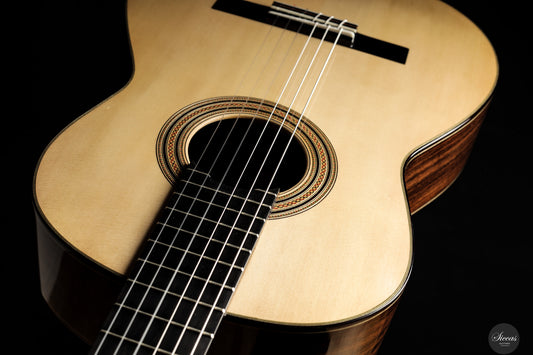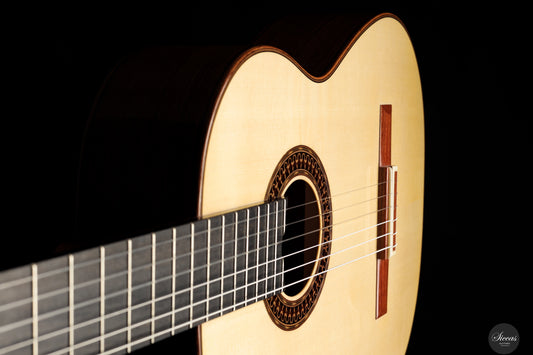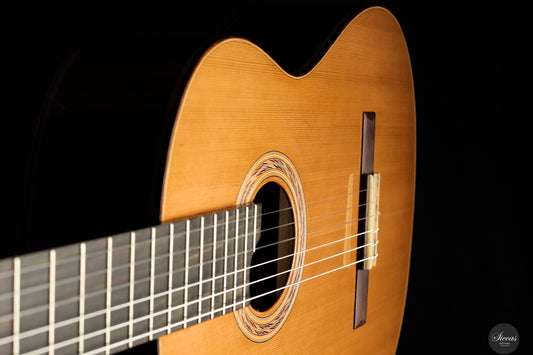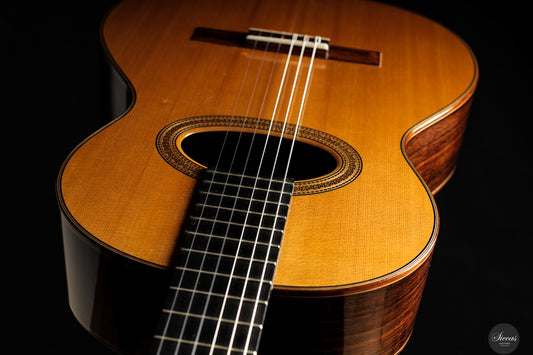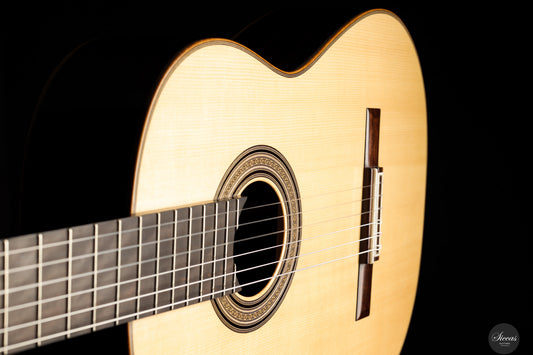
Understanding Johann Sebastian Bach’s Bourrée in E Minor: A Masterpiece for Classical Guitar Enthusiasts
Introduction Johann Sebastian Bach's Bourrée in E Minor, originally composed as part of the Lute Suite in E Minor, BWV 996, is one of the most beloved pieces among classical guitarists. Its iconic melody, rhythmic vitality, and accessible structure have made it a favorite among both amateur and professional musicians. This article delves into the historical context, musical structure, and techniques needed to play this piece, while also exploring why it remains a timeless classic for guitar enthusiasts.
Whether you're a beginner tackling your first Bach piece or an experienced guitarist refining your interpretation, this guide offers valuable insights into why Bourrée in E Minor is essential repertoire for any classical guitarist.
Historical Context of Bourrée in E Minor
Composed between 1710 and 1712, Bourrée in E Minor is part of Bach's Lute Suite in E Minor, BWV 996. Though written for lute, it translates naturally to the classical guitar thanks to its idiomatic voicing and rhythmic drive. The bourrée itself is a French dance form, popular in the Baroque era for its lively tempo and elegant rhythm.
Over the centuries, this piece has become a cornerstone of the classical guitar repertoire, frequently performed in concert, studied in music education, and shared among guitarists for its musical and pedagogical value.
Musical Structure and Analysis
The piece is written in 4/4 time and structured in binary form (AABB), typical of Baroque dance movements. The first section introduces a rhythmic, arpeggiated theme, while the second section expands on it through melodic and harmonic variation.
Key Features:
- Key: E minor
- Time Signature: 4/4
- Form: Binary (AABB)
- Tempo: Allegro or Vivace
Bach's use of counterpoint is prominent, with independent voices moving against each other to create harmonic tension and release. The interplay between bass and treble lines demands careful attention to phrasing and voicing.
Techniques for Playing Bourrée in E Minor on Guitar
Mastering this piece involves a combination of right-hand control, left-hand clarity, and interpretive awareness. Below are some key techniques to focus on:
1. Fingering and Positioning
Choose fingering that promotes efficiency and avoids tension. Practice slowly to ensure accurate shifts between positions, and use barre techniques where appropriate to maintain continuity in phrasing.
2. Right-Hand Technique
Use alternating fingers (i-m or m-a) for scale passages, and let your thumb handle bass lines cleanly. Keep your hand relaxed and prioritize tone over volume.
3. Phrasing and Dynamics
Although Baroque music was written before dynamic markings became common, modern interpretations benefit from thoughtful phrasing. Emphasize contrasts between sections and shape melodic lines with subtle dynamics.
4. Tempo and Rhythm
Maintain rhythmic consistency with the help of a metronome. While keeping the tempo lively, ensure that rhythmic patterns—especially dotted rhythms—are executed precisely.
Common Mistakes to Avoid
Here are a few things to watch out for as you learn the piece:
- Exaggerated Dynamics: Avoid overly dramatic volume changes. Strive for subtlety and balance.
- Neglecting Inner Voices: Give attention to both melody and counter-melody to preserve the contrapuntal character.
- Rushing: Keep a steady pulse, particularly in transitions between phrases or sections.
Why Bourrée in E Minor is a Must-Play for Guitarists
This piece has earned its place in the guitar canon for several reasons:
- Accessible Yet Sophisticated: Ideal for intermediate players seeking a rewarding challenge.
- Technical Development: Builds finger independence, articulation, and musicality.
- Interpretive Freedom: Encourages exploration of phrasing and dynamics within a structured form.
- Enduring Popularity: A familiar and beloved piece that resonates with audiences and players alike.
How to Practice Bourrée in E Minor Effectively
Try this structured approach to maximize your progress:
- Step 1: Listen to great interpretations (e.g., Bream, Williams, Segovia).
- Step 2: Isolate the A and B sections, mastering each independently.
- Step 3: Practice hands separately if needed, focusing on tone and control.
- Step 4: Use a metronome to build consistent timing.
- Step 5: Refine expression by experimenting with dynamics and tempo variations.
Recommended Recordings and Performances
Study these iconic recordings for inspiration and stylistic insight:
- Julian Bream – Elegant and expressive with beautiful tone.
- John Williams – Precision and clarity with refined articulation.
- Andrés Segovia – A lyrical, romantic interpretation highlighting the piece's melodic qualities.
- Xufeiy Yang – Warm and played with clarity. Xuefei Yang plays her own arrangement of this famous work.
These performances serve as valuable models for developing your own interpretation while honoring Bach's style.
Conclusion
Bourrée in E Minor by Johann Sebastian Bach is more than just a student piece—it's a masterpiece of Baroque elegance and musical craftsmanship. Playing it well demands precision, musical sensitivity, and interpretive insight, but the rewards are immense.
Whether you're preparing it for performance or personal enjoyment, studying this work will deepen your connection to Bach's music and strengthen your skills as a classical guitarist.






